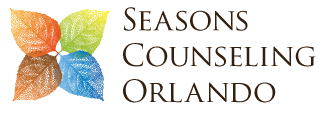Neurofeedback Therapy
What is Neurofeedback?
Neurofeedback - or brain training - is a means of optimizing brain wave patterns to help us achieve emotional and mental health and well-being. Because our brains are responsible for everything we do, think, and feel, it is important to keep it working effectively. Not unlike the mechanical things we rely upon for daily functioning— laptop, car, coffee maker— the brain sometimes needs fine tuning.
Neurofeedback can help improve brain functioning. Through direct training of power given to specific brainwaves, the brain learns to function more if efficiently. Myraid issues and challenges are aided by Neurofeedback, including but not limited to:
Anxiety / Depression, Reduction
Improved Concentration
Better Mood Regulation
Relief from Symptoms of OCD, ADHD, and PTSD
Improved Self Regulation and Adaptability
Neurofeedback is training in self-regulation. It is simply biofeedback applied to the brain directly. Self-regulation is a necessary part of good brain function. Self-regulation training allows the system (the central nervous system) to function better.
How Does Neurofeedback Work?
Sensors are applied to the scalp to get real time readings of brain wave activity. The signal is sent to an amplifier that connects to a computer. The computer software extracts information about certain key brain wave frequencies. This information is shown back to the client in the form of audio/video. During this time, the brain is using the feedback to adjust the power levels of targeted brainwaves. Some frequencies are rewarded while others are inhibited.
Eventually the brain wave activity is “shaped” toward more desirable, more regulated performance. The frequencies that are targeted are related to the specific conditions or symptoms we are trying to address with that client.
A DRUG FREE OPTION TO HELP REGULATE THE BRAIN.
What is Brain Mapping?
The brain mapping process, also known as quantitative electroencephalogram (qEEG) is an assessment used to develop a comprehensive understanding of an individual’s brain wave patterns.
Most individuals who are interested in neurofeedback will begin with a brain map. Individuals will wear a cap that contains 19 sensors while baseline brain wave activity is recorded. As with neurofeedback sessions, nothing is going into the scalp – the sensors are only recording the electrical activity the brain is producing – and there is no pain involved. Once the information is recorded, a report is produced showing which brainwaves need power regulation and at which hemispheric location. From that point we develop specific and individualized training sites (protocols) to be used for training.
Frank H. Duffy, M.D. Professor and Pediatric Neurologist at Harvard Medical School says: “Neurofeedback should play a major role in many difficult areas. In my opinion, if any medication had demonstrated such a wide spectrum of efficacy it would be universally accepted and widely used”.



